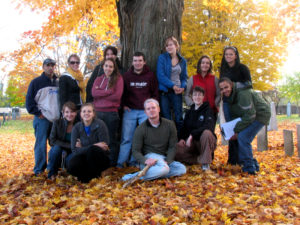These are some of the courses I teach regularly:
ANTHRO 290A- The Anatomy of the Human Body
The Anatomy of the Human Body is designed to give the student a thorough understanding of human gross anatomy from embryological, functional and evolutionary perspectives. The course is divided into 4 Units (Thorax and Abdomen, Back and Upper Limb, Pelvis and Lower Limb, Head and Neck) , each of which covers specific anatomical regions and introduces the major systems of the human body in those regions. Each unit integrates anatomy with evolutionary and functional approaches on various aspects of anatomical complexes specific to that unit (e.g. Lower limb anatomy and bipedal locomotion, larynx and evolution of language, pelvis and evolution of rotational birth). This course is targeted at students who aim to pursue health-related professions (medical/dental graduate programs, nursing, PT/OT, PA, etc…), anthropology majors who want to build a solid background in human evolutionary anatomy into their training, as a component of the anthropology “The Human Body” and Evolutionary Anthropology tracks, and the Culture, Health, and Science program.
, each of which covers specific anatomical regions and introduces the major systems of the human body in those regions. Each unit integrates anatomy with evolutionary and functional approaches on various aspects of anatomical complexes specific to that unit (e.g. Lower limb anatomy and bipedal locomotion, larynx and evolution of language, pelvis and evolution of rotational birth). This course is targeted at students who aim to pursue health-related professions (medical/dental graduate programs, nursing, PT/OT, PA, etc…), anthropology majors who want to build a solid background in human evolutionary anatomy into their training, as a component of the anthropology “The Human Body” and Evolutionary Anthropology tracks, and the Culture, Health, and Science program.
ANTHRO 297NF-Neandertals, Facts and Fiction
Neandertals! The word evokes images of brutishness and ineptitude. Since their discovery in the 19th century, Neandertals have captured our imagination and have been immortalized in many works of fiction. Over the past three decades, Neandertals have also been at the center of many heated scie ntific debates, and much has been learned about these Ice Age humans. In this course, we explore Neandertals from two perspectives: First, we examine what is known about them from a scientific perspective (“the facts”); second, we evaluate how works of fiction and popular films about Neandertals represent them against what science tells us about them (“the fiction”).
ntific debates, and much has been learned about these Ice Age humans. In this course, we explore Neandertals from two perspectives: First, we examine what is known about them from a scientific perspective (“the facts”); second, we evaluate how works of fiction and popular films about Neandertals represent them against what science tells us about them (“the fiction”).
ANTHRO 320 – Skeleton Keys: Research Methods in Skeletal Biology
In this course, you will learn how the bones of people in the past can tell us about how they lived. You will work with the skeletal remains from an Italian Medieval cemetery and learn how to reconstruct their gender, age, and many aspect s of their lives. What did people eat? What did they do for a living? Where they healthy or do they show evidence of stress? Did they die young? Who died young? Why and when did they die? Did they engage in warfare? Were there status differences? Did these status differences affect their chances of survival? Did violence affect women disproportionately? We will also visit the Old Hadley Cemetery and collect information from the grave stones for a project. Hot apple cider and cookies included in the field trip!
s of their lives. What did people eat? What did they do for a living? Where they healthy or do they show evidence of stress? Did they die young? Who died young? Why and when did they die? Did they engage in warfare? Were there status differences? Did these status differences affect their chances of survival? Did violence affect women disproportionately? We will also visit the Old Hadley Cemetery and collect information from the grave stones for a project. Hot apple cider and cookies included in the field trip!
